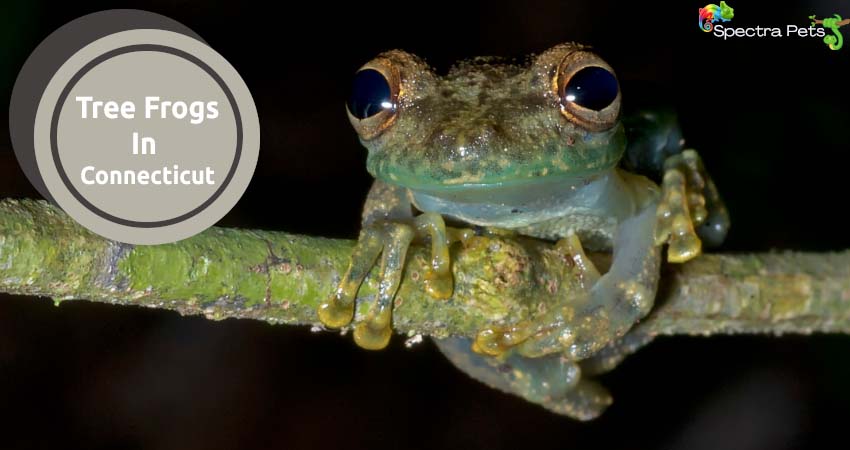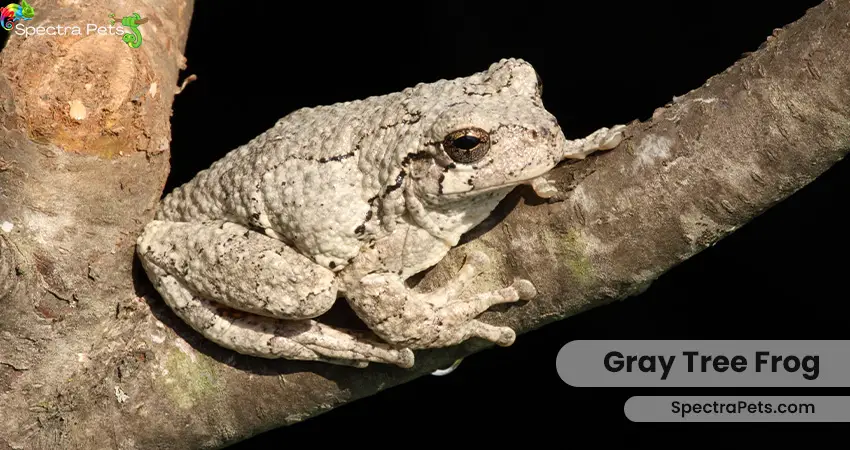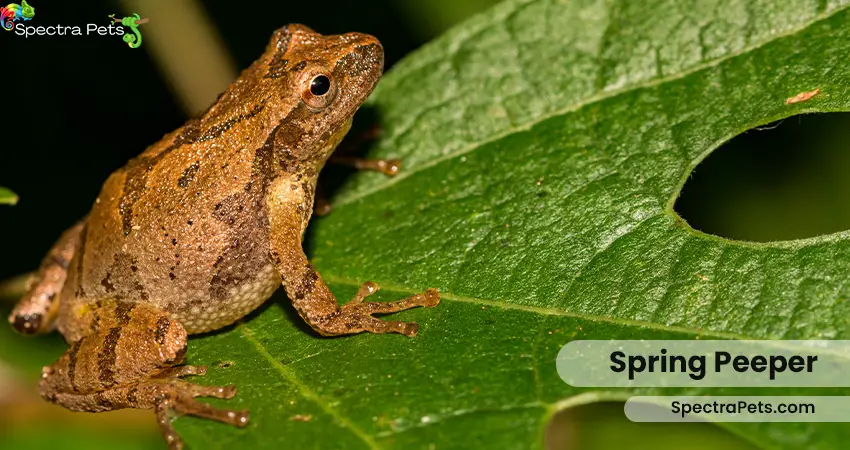Connecticut is famous for the beautiful autumn foliage, green hills & prestigious universities. This state is blessed with a rich biodiversity that includes tree frogs.
Undoubtedly as an amphibian lover it’s a never wasted moment to explore in detail about tree frogs. However, compared to other states Connecticut has a lower number of tree frog varieties. They only have 2 – the gray tree frog and the spring peeper.
Here you will know about the existing 2 tree frogs that have a stable population in Connecticut. I will explain their lifespan, habitat, diet & much more.
Stay tuned dear friends…

Tree Frogs Found in Adjacent States of Connecticut:
2 Cute Tree Frogs in Connecticut
Unlike other states that have 20+ tree frogs, Connecticut only has 2 tree frogs. They are the gray tree frog and spring peeper. They’re so common throughout the USA that you can almost see them in almost every state. I’ll discuss about them in broad details down below:
1. Gray tree frog

I would like to call them survival machines due to their high-level adaptation. First of all, they can change skin shade anytime they want from green to gray to brown. Adding to that, during darkness, they appear lighter shades while in daytime their skin tone remains darker.
It’s not ended yet, gray tree frogs are top-notch climbers. Their sticky toe pad helps them climb on trees both horizontally & vertically. Whenever a predator tries to kill them, these frogs stun their enemies with a toxin from the skin. So the attacker feels disturbed & leaves them most of the time.
Plus, their breeding season starts in April and continues up to August. As long as the breeding season remains, the male becomes aggressive and starts calling the female to stagnant water with aquatic plants for mating.
Furthermore, the 1.25-2.25″ provides them an extra advantage to play like a boss in the food chain. The staple food of this amphibian includes snails, small-size frogs, insects, mites, plant lice, etc. Their average lifetime is too good with an average of 7-9 years.
Speaking of their habitat, swamps, marshes, forests, and wooded areas are their priority.
Though they spend a significant time on the forest floor whenever they become old, they move high on trees. It’s hard to see them in the habitat as they hide pretty well under leaf litter.
For the people of Connecticut, watching these little fellas in the backyard would not be a surprising scene.
Read More: Are Gray Tree Frogs Poisonous?
2. Spring peeper

Another tree frog of Connecticut is the Spring peeper that’s known in many areas of the USA for its loud trill.
This frog has an amazing adaptation that helps it to make the predator foolish. The moment they feel the presence of any potential hunter they change their skin color to the surrounding color. These colors can be brown, gray, brown, or reddish to pink.
Adding to that, their climbing ability ensures more safety from a predator like a salamander, snakes & birds of prey.
Plus, they remain immobile during the day & as the night enters they get busy hunting down insects like ants, spiders, mites, and beetles. Their average lifespan of 3-4 years ensures that this species is not endangered at all.
It won’t be hard for an average guy to find out the male & female difference. The female of this species is bigger & has lighter skin. While the male is smaller & has darker skin shades.
As April-June is their breeding time, the male will make a lot of noise during this time. Most importantly, their desirable habitat is a versatile zone like grassland, moist area, and wooded area that are close to water bodies. During harsh winter, the spring peeper frog uses hibernation mode to survive smoothly.
Final words
Though the number of tree frogs in Connecticut is pretty low compared to other parts of the USA, they do a great benefit to the ecosystem.
You saw the details about the tree frogs’ behavior & other attributes that make them unique.
If this article was worth spending time on with a frog, love would be satisfying for both of us.
Tree Frogs Found in the Nearby States of Connecticut:
